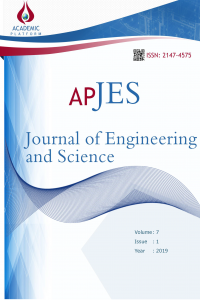Abstract
Zeminlerin mühendislik özelliklerinin yetersiz olduğu durumlarda zemin iyileştirerek mühendislik özellikleri arttırılabilmektedir. Zemin iyileştirme çalışmalarında kireç, çimento, uçucu kül vb. birçok yöntem kullanılmaktadır. Zemin iyileştirmelerinde zeminin mevcut mühendislik özellikleri ve iyileştirme maliyetleri önemli parametrelerdir. Bu çalışmada, deprem bölgelerinde ciddi çevre sorunu haline gelen, şehirlerde görüntü kirliliği yaratan ve yaşam konforunu bozan deprem yıkıntı atıklarının zemin iyileştirmesinde kullanılması amaçlanmıştır. Bu amaçla, Sakarya da 1999 yılı depremlerinde yıkılan binalara ait yıkıntı atıkları ile laboratuar ortamında zemin iyileştirmesi yapılarak bu zeminlerin CBR değerleri belirlenmiştir. Çalışmada, inşaat yıkıntı atığı, kireç ve kaolin karıştırılarak bu karışımların 1, 7 ve 28 günlük CBR değerleri ölçülmüştür. İyileştirilecek zemin örneği olarak şişme potansiyeli en yüksek olan kaolen kili kullanılmıştır. Karışımlarda kireç oranı %0 referans, %5 ve %8 seçilirken, inşaat atığı oranı %0 referans ile %23 arasında, kaolin ise %0 referans ve %72 ile %100 arasında seçilmiştir. Karışımlarda birinci, yedinci ve yirmi sekizinci gün için en düşük CBR değerleri sırasıyla 26.3, 28.65 ve 33.13 olarak %3 Yıkıntı atığı, %5 Kireç ve %92 Kaolin kullanıldığında, en yüksek CBR değeri ise 33.52, 34.70 ve 34.95 ile %23 yıkıntı atığı, %5 kireç ve %72 kaolin kullanıldığında elde edilmiştir.
References
- 3
- 5
- 10
- 7
- 8
- 9
- 12
- 13
- 14
- 15
- 17
- 18
Abstract
In the cases when the engineering properties of the soils are insufficient, engineering properties can be increased by improving the soil. In the soil improvement studies, various methods such as lime, cement, fly-ash etc., are employed. The available engineering properties and the cost of improvement are important parameters in the soil improvement. In this study, it was aimed to utilise earthquake construction waste, which has become a serious environmental problem in the earthquake zones, causes visual pollution in the cities and ruins the living comfort, in soil improvement. For this purpose, the CBR values of these soils were determined by carrying out soil improvements with the construction waste of the buildings collapsed in the 1999 earthquake in Sakarya in the laboratory environment. In the study, the CBR values of 1, 7, and 28 days of these mixtures were measured by mixing the construction waste, lime and kaolin. As the sample of the soil to be improved, kaolin clay which has the highest potential to swell was used. While the lime ratio in the mixtures was selected as 0% reference, 5% and 8%, the construction waste ratio was selected between 0% reference and 23%, and kaolin was selected as 0% reference and between 72% and 100%. When 3% Construction waste, 5% Lime and 92% Kaolin were used in the mixtures, the lowest CBR values were obtained as 26.3, 28.65 and 33.13 for the first, seventh and twenty-eighth days, respectively, and when 23% construction waste, 5% lime and 72% kaolin were used, the highest CBR values were obtained as 33.52, 34.70 and 34.95, respectively.
References
- 3
- 5
- 10
- 7
- 8
- 9
- 12
- 13
- 14
- 15
- 17
- 18
Details
| Primary Language | Turkish |
|---|---|
| Subjects | Engineering |
| Journal Section | Articles |
| Authors | |
| Publication Date | January 15, 2019 |
| Submission Date | June 26, 2018 |
| Published in Issue | Year 2019 Volume: 7 Issue: 1 |

